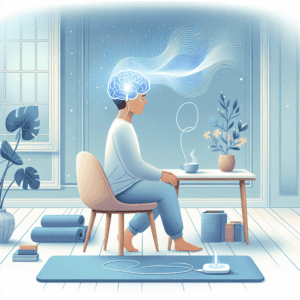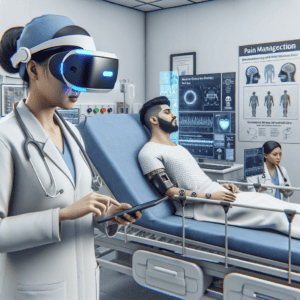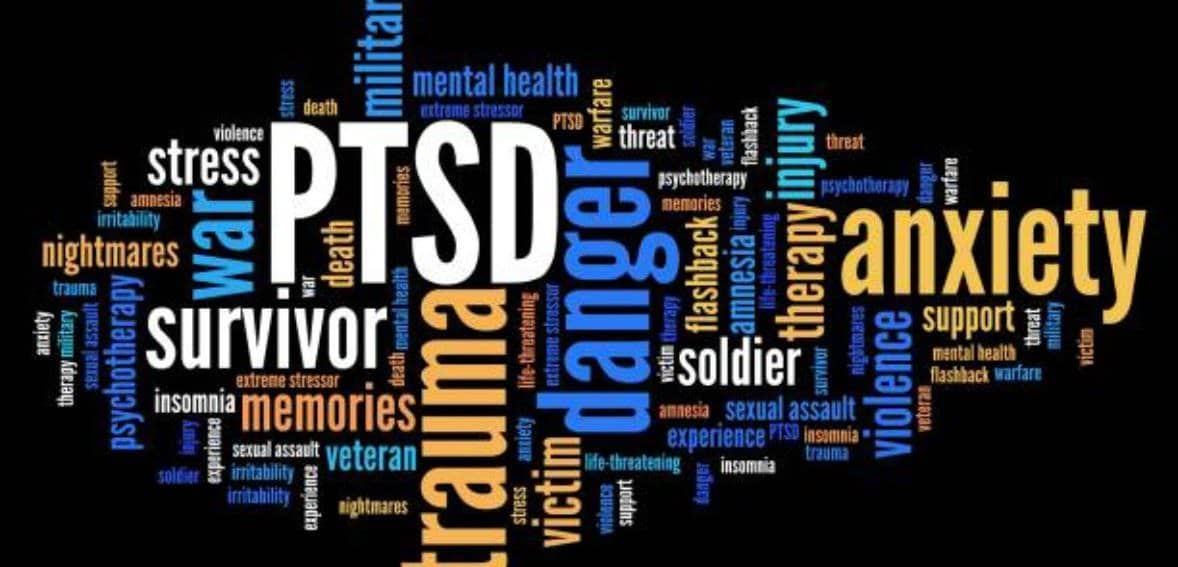Artificial intelligence is shaping the world and various aspects of human life. The new application of AI emerges in the field of mental health, which has become as of the most pressing issues of the 21st century. According to the World Health Organization, 1 in every 8 people are living with depression, mental disorder, and anxiety. The impact of the COVID-19 pandemic and the increased level of unbalanced lifestyle have further impacted the mental health of people negatively.
Parallelly, the inclusion of AI and other advanced technologies is prepared to address mental health challenges. The creation of new tools and strategies that are integrated with AI will help make mental health solutions more accessible, personalized, and effective. Among other advancements, one such promising innovation is Virtual Reality (VR) therapy and mood-tracking gadgets that have recently gained attention. This blog explores the integration of VR therapy and mood-tracking wearables in mental health solutions and the prospects of these technologies as they continue to evolve. It also analyzes potential benefits, challenges, and impacts.
Mental Health Crisis – 21st Century

Exploring the Potential of At-Home Brain Stimulation for Depression Treatment
Highly ignored earlier, anxiety, depression, mental disorders, stress, phobias, and addiction have now become the reality of this century, which, if not taken care of now, will further worsen the situation. According to a study conducted by SAMHSA in 2021 highlights that 1 in 5 U.S adults face mental illness every year. Various studies also make it evident that the young population of the country is more prone to mental health syndromes. The study conducted on college students by Mighty Pursuit revealed that over 88% of the college-going students have witnessed some kind of mental health issue. The major mental conditions include Schizophrenia, Obsessive Compulsive Disorder, Borderline Personality Disorder, Bipolar Disorder, Posttraumatic Stress Disorder, and Major Depressive & Anxiety episodes.
As the mental health challenges are accelerating, so does the need to address the drawbacks of the traditional treatment system. This line of argument includes a shortage of healthcare professionals, high treatment costs, societal taboos, and difficulty in diagnosis. It should be understood that mental health challenges require personalized, affordable, and easy access to mental health solutions to counter the pressing issue. Given these challenges, tools like VR therapy and mood-tracking wearables hold great potential in addressing mental issues.
What is VR Therapy?

Virtual Reality Therapy: A Breakthrough in Pain Management for Opioid Addiction Recovery
VR technology (VR) therapy is an innovation that uses VR technology to provide stimulation that will help manage the individual’s mental health conditions, such as anxiety, PTSD, phobias, and depression. Basically, in VR therapy, patients are exposed to tailored real-world experiences that help them confront their fears, phobias,s or other things that trigger them in moderation. This clinical exploration has proved to be quite effective according to some studies where an individual who was made to encounter his fear through the headset, was able to overcome it.
The concept of VR therapy is not new but dates back to the 1990s when as an early experiment it was used for military training and fight scenarios. However, it is in the past decade that VR therapy was introduced in the healthcare industry. In its early invention, it was very challenging to use VR therapy as it was quite expensive, bulky, and limited to specialized industries. Nevertheless, the continuous evolution of this technology has made it affordable and user-friendly.
The VR offers an immersive nature treatment where individuals are treated in a controlled, safe, and secure environment. This therapy is based on the principle of exposure therapy, which believes that gradual and moderate exposure to things that excite or cause fear can help the patient to strategize and think calmly to gain mastery over his mental issues. VR therapy is most suited for people suffering from PTSD, anxiety, and phobia. Additionally, unlike traditional methods of mental health treatment, this methodology can be practiced remotely.
Type of VR Therapy
In the specifications, VR therapy is designed in various formats to help the patient overcome their problem In exposure therapy people are gradually exposed to scenarios that trigger their stress, trauma or phobias in a controlled and safe virtual environment. This gradual exposure helps the patient to strategize and control their fear without the fear of having real-world consequences. This type is particularly suited for patients facing PTSD, phobia, and anxiety issues.
Another type is VR-based Cognitive Behavioral Therapy (CBT), where patients are engaged in virtual environments so that they can practice new strategies to stop negative thinking and amend their negative temperament with positive self-affirmation. VR therapy’s leading benefits lie in using it for relaxation and stress management programs. Therapy can guide patients to increase their mindfulness and overall stress reduction.
Patients facing chronic pain can also avail benefits of VR therapy where VR can help them distract from their intense pain, especially during medical surgery. Even VR therapy can be used for speedy recovery from injuries by helping them do exercises of mobility and strength. In this situation, the exercise can be tailored depending upon the needs and progress of the patient.
Benefits of VR Therapy
VR therapy is designed to help manage individuals with symptoms. This technology is quite immersive and can be used to create a highly customized environment that can cater to individuals with specific needs, allowing for personalized treatment plans. For example, a person has stage fear and takes the help of VR to exercise speaking in front of the stage virtually to gain confidence. Those with PTSD can be gradually exposed to their triggers virtually so that they can build a coping mechanism when that trigger hits them in the real world. VR therapy can also be utilized to manipulate and distract those suffering from unbearable chronic pain, especially while conducting medical surgeries. Its other health-related uses include providing aid in physical rehabilitation and even addictions.

Another key advantage of VR therapy is that it is quite accessible and can be used remotely. This can prove to be of great aid for patients having financial limitations, physical disabilities, and geographical inaccessibility to traditional mental health treatment. Patients can easily access this technology from their home. On top of that, it is quite budget and user-friendly and does not have any privacy concerns.
Other than treatment benefits, VR therapy will help a lot in understanding complex surgical skills and making future research & assessment. The therapist with the help of VR can even monitor the progress of patients to provide instant feedback. This makes VR therapy as a very personalized tool that can also help in addressing the shortage of healthcare professionals.
What are Mood-Tracking Wearables?
Mood-tracking wearables refer to smart devices or gadgets that are specifically designed to monitor and analyze the emotional state of a person in real-world situations. Basically, these devices make use of biometric sensors and AI-powered tools to track psychological symptoms such as heart rate, thermal temperament, and sleep patterns. Some highly efficient wearables may also take into consideration the voice, video and even sensor data of smartphones

These mood-tracking wearables can be integrated in smartphones, smart watches, or hand-band. These wearables, unlike traditional methods, take into account subjective data-driven data of high quality and deliver results based on scientific calculations. These calculations will tell about even slight disbalance that will help in proactive measures.
How do Mood-Tracking Wearables work?
Basically, analyzing the data input and integrating it with biosensors allows the device to drive algorithms. To monitor the biosensors, wearable notice variations of heart rate, electrodermal activity, skin temperature sensors, and sleep quality. Artificial Intelligence (AI) also plays a pivotal role in assessing the mood. Some devices use AI algorithms to process biometric data and even natural language processing (NLP) to analyze voice tone to identify emotional symptoms. Some devices go to the extent to recognize facial features to asses micro-expressions to detect emotional state.

Some of the Notable Mood-Trackers include:
- Fitbit
- MoodCast
- MoodFit
- A Tracker
- Whoop
- Daylio
- Mood Mission
Benefits of Mood-Tracking Wearables
The principal benefit of Mood-tracking wearables is that they provide a scientific assessment of mental health that is based upon real-time monitoring, unlike traditional health professionals. This monitoring empowers the user to take preventive measures before the situation accelerates. Moreover, AI-driven recommendations are quite personalized and even the settings of such wearables can be customized depending upon the needs of the user. For example, A patient with a heart condition can specifically tailor settings to monitor his heart and guide about the necessary workout to control the cholesterol level.
Other than assessing the mental health condition, the wearables are also programmed to provide recommendations to minimize stress levels like putting emphasis on taking sleep or doing meditation for 15 minutes. Additionally, it also has an alert feature that not only helps in taking proactive steps but also keeps reminding users about taking those steps in their busy schedules. Like VR therapy this tool is also quite accessible, affordable, and user-friendly making it a perfect choice for the patients.
Challenges Associated With Mood-Tracking Wearables
Despite its various benefits, there are several ethical, technical, and practical challenges associated with the wearables. One important point of concern is that the nature of people is very complex and is influenced by various external and internal factors. Therefore, it is very difficult to assess the accurate emotional health of the user. Some experts also suggest that there are potential privacy and security concerns as unauthorized access or breach of sensitive data can be used maliciously.
Conclusion
The integration of VR Therapy and Mood Tracking wearables are revolutionizing medical technology and holds the potential to genuinely address the ongoing mental health challenges. These innovations can bridge the gap between traditional healthcare solutions and modern healthcare challenges. However, challenges such as data privacy, accuracy and accessibility should also be confronted.





